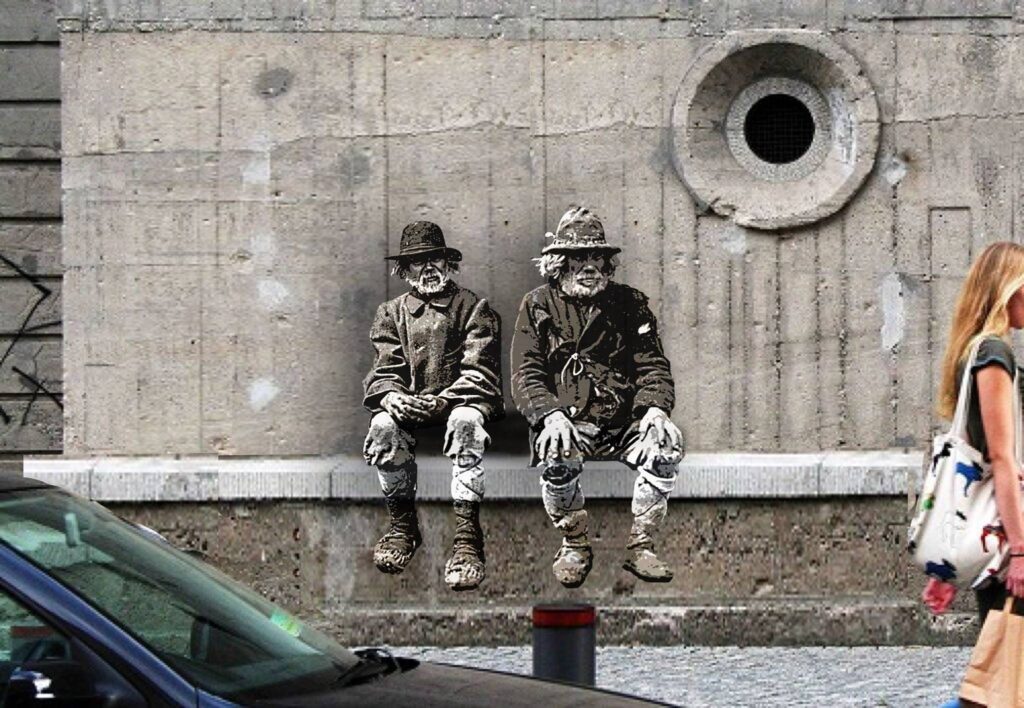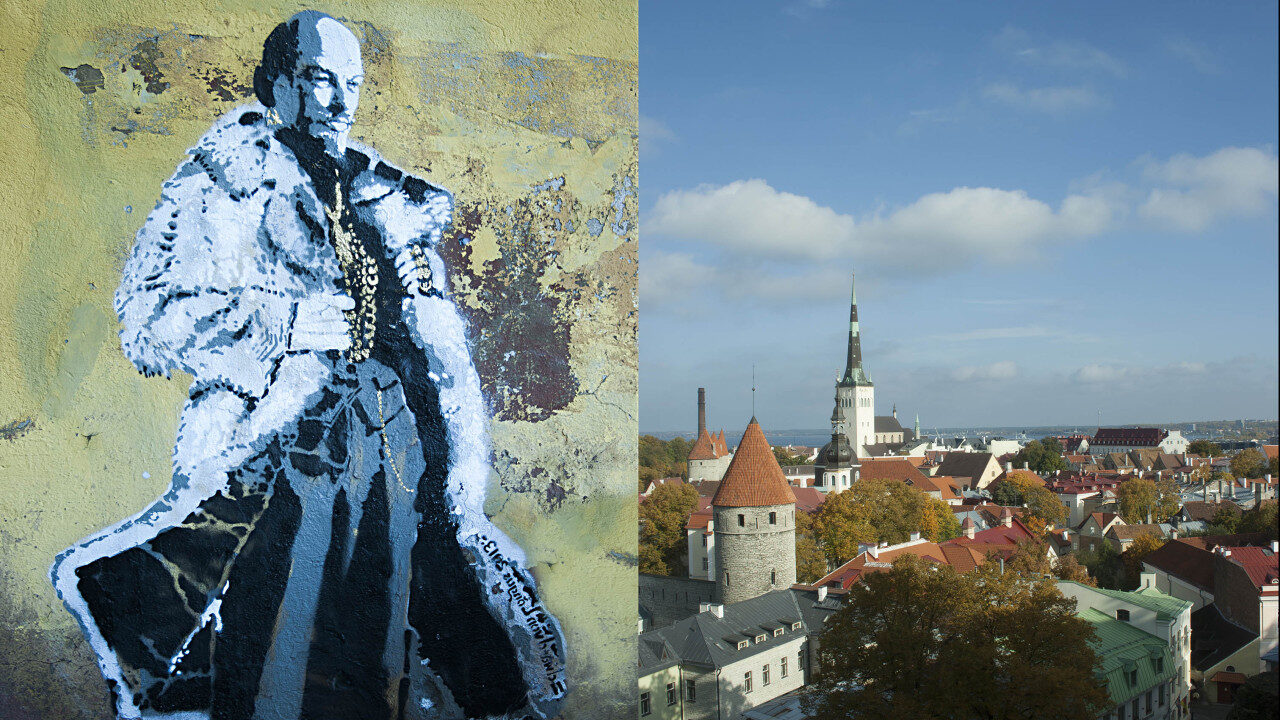As chique and attractive as these modern buildings may be to the moneyed man’s eye, they are inaccessible to most people. Just as Toronto is growing taller, bigger, and more recognizable, so, too, does our society’s wealth gap. Now more than ever, we are living in a time of indifference and separation, both within ourselves and between each other.
In this grim reality, is there anything that can bring us together? The answer is simple (and admittedly a little cliché): art. In these dull sprawls of gentrified urban areas, street art revives the heart and soul of forgotten communities. Often provocative and necessarily subversive, street art captivates the collective imagination of its passersby, regardless of status or wealth.
The difference between graffiti and street art
Graffiti and street art, although used interchangeably, are terms that represent two different, and sometimes competing, worlds of self-expression. It is important to distinguish between them to not conflate the two meanings.
The goal of many graffiti artists (who are usually self-taught) is simple: to situate their work and message at the forefront of society’s collective consciousness.
Graffiti’s origins lay in the beginning of human civilization itself with cave drawings and abstract methods of communication. But the form that most have been acquainted with today — such as artists’ personal “tags” — was developed in the Black and Latino neighbourhoods of New York City in the late 1960s, catalysed by the invention of the aerosol spray-can.
The goal of many graffiti artists (who are usually self-taught) is simple: to situate their work and message at the forefront of society’s collective consciousness. Spaces with heavy foot traffic, including subways and businesses, are commonly tagged to appeal to wide audiences.
Such accessibility is what makes graffiti unique. It transcends the boundaries of typical mediums. Unlike a canvas, per se, graffiti is not limited by conventional borders. From lamp posts to bridges, virtually anything can pose as a setting for graffiti art. The need for supplies, studios, and galleries — which are often expensive, hierarchical, prejudiced, or otherwise inaccessible to most — becomes obsolete to the graffiti artist. It is an artform that’s accessible to a wide range of people, both in its creation and consumption.
Street art evolved out of graffiti into something more complex. Artists extracted some of graffiti’s core elements — including accessibility and social controversy — to create provocative, image-based (rather than word-based) murals. While street artists are sometimes commissioned by governments or businesses to decorate local buildings, others still paint illegally. Banksy’s emotionally and politically-charged stencil-based murals are a common example of the latter.
Artists and activists took advantage of street art’s wide reach to powerfully represent social and political messages that were otherwise being neglected by mainstream discourse. Through his expressive and stirring illustrations, New York City based street artist Keith Haring shed light on and helped dismantle the stigma surrounding HIV/AIDS during the 1980s.
At their core, street art and graffiti are some of the simplest yet simultaneously most powerful avenues of free expression.
Estonia’s street art culture
Street art and graffiti first took hold of the country when Tartu held its first Stencilibility festival in 2010. Every summer, either in Tartu or in other Estonian cities, artists are invited to put up their creations. According to the festival’s organisers, “…public space belongs to everyone and it is our job to take care of it. We believe that the purpose of street art is to enrich public space, not to spoil it.” They also note that “If you don't like it, do it over and do better… [you should] Act according to your conscience, not according to the law.”

Now more than a decade later after Stencibility’s first festival, the city is filled to the brim with lively murals that offer its neighbourhoods a unique charm. Popular locations to find street art in the city are at Aparaaditehas (Widget Factory), the Karlova neighbourhood, and sprinkled around downtown. Tartu’s spirited murals offer onlookers a certain insight into the city’s captivating allure.
“The Estonian Banksy”
Known by his alias Edward von Lõngus (EvL), the Tartu-based street artist has garnered the attention of the art world, had his work featured in exhibitions, and sold in auctions.
He has been compared to Banksy for his stencil-based street art that is politically-charged and that pursues emotional, captivating subject matter.
EvL’s success can be attributed to his relatability. His ability to take themes connected to Estonia’s cultural history — including folk tales, nature, and various iconic children’s book characters — and infuse them with relevant political discourse or social commentary makes his art relevant to Estonian audiences and beyond.
By taking something as innocent as a children’s cartoon and injecting it with a powerful statement on the war on drugs — both through his imagery and the space it occupies — EvL caught the attention of the Estonian government and art critics abroad.
Cannabeard and the Witch-Hunter, a stencil he produced in 2014, on a wall next to the Supreme Court of Estonia, features the Estonian children’s book character Sammalhabe (“Mossbeard”, from Eno Raud's novel Naksitrallid) adorned with marijuana plant leaves, being arrested by the police.
Provocative, eye-catching, and undoubtedly uncomfortable in the eyes of some, EvL knows how to flame the fan of controversy. By taking something as innocent as a children’s cartoon and injecting it with a powerful statement on the war on drugs — both through his imagery and the space it occupies — EvL caught the attention of the Estonian government and art critics abroad.
But EvL has not stopped there. He’s breaking the boundaries of street art’s presentability and consumption for Estonians and beyond. EvL has taken Estonia’s digital prowess as inspiration for some of his latest projects.
“When you encounter street art in real life, what’s the first thing you do? People take out their phones to create a virtual version for hundreds of others, and experiencing these artworks online is already a virtual experience. And that inspired me to experiment with the form of presenting street art. That’s how I came up with the idea of using Augmented Reality or AR and implemented it in my first AR project R)estart Reality,” said EvL.
Created in 2007, (R)estart Reality was EvL’s first digital street art project, created as a testament to Estonia’s centennial anniversary. It uses augmented reality (AR) and virtual reality (VR) to bring iconic characters from the country’s past 100 years to life, creating a certain synergy between the past and the present. Through an app, users can see these characters on any wall in the world, highlighting the borderless and ever-expanding nature of graffiti and street art.
Since the dawn of human civilization, graffiti has stood the test of time. It is undeniable that street art breathes life, charm, and character into the public spaces around us.
This article was written by Natalie Jenkins as part of the Local Journalism Initiative.




